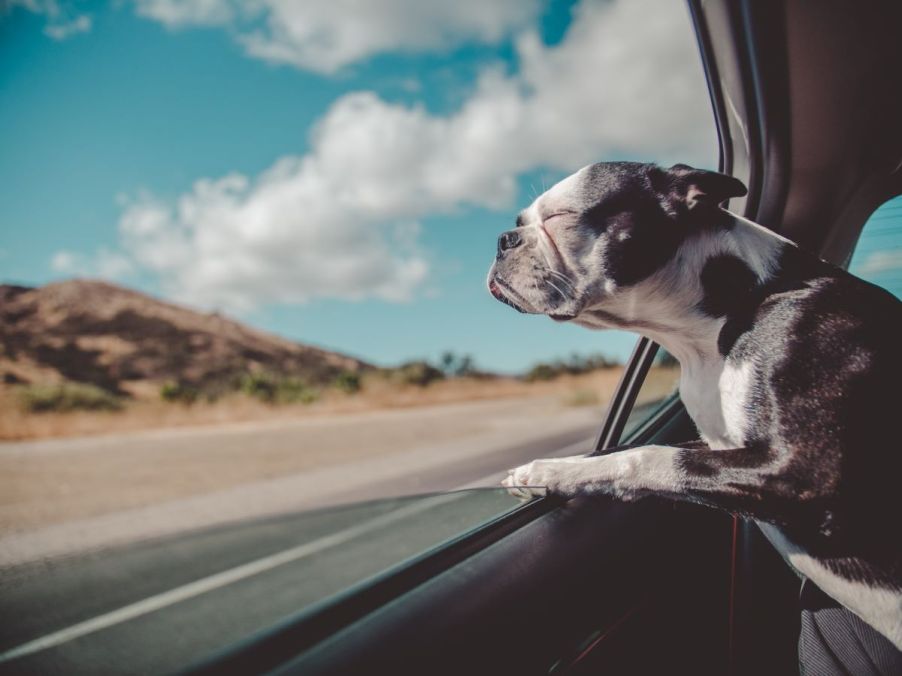
Do Dogs Get Carsick? What to Do if Fido Tosses His Cookies
Why does my dog throw up on car rides? Your pup may love going on adventures with you but hate the driving part. Motion sickness in dogs is actually a lot more common than you think, and some of the signs of dog carsickness can be subtle.
Learn what triggers motion sickness, how to treat it, and how to properly clean up your car in the event that Fido tosses his cookies.
Can dogs get motion sickness like people?
Yes! The same sensory conflicts that cause carsickness and motion sickness in people can cause the same issues to arise in dogs. While this affliction is more common in puppies and younger dogs than in older dogs, some pets struggle with it throughout their lives.
Some types of vehicle may trigger motion sickness worse than others. There’s some anecdotal evidence that SUVs cause car sickness in people more often than sedans or other cars.
VCA Animal Hospitals says that dogs vomiting in cars may not always be caused by motion sickness, but rather by anxiety. If your dog doesn’t travel often in the car, and only goes for drives to places like the vet, the groomer, or anywhere else they may feel uneasy, they could associate the car with stressful events.

Signs of motion sickness in dogs
Also like in people, the signs of motion sickness can vary. In dogs, these signs typically include any one or combination of the following:
- whining and pacing
- excessive drooling
- smacking or licking lips
- lethargy or inactivity
- vomiting
- diarrhea
An important thing to note is that many of these symptoms can also be signs of stress or anxiety. Be sure that car rides are headed to fun, wonderful places with the things that your dog loves more often than not!
How long does carsickness last in dogs?
True motion sickness, caused by a sensory imbalance, often goes away by the time young dogs hit one year old. This is because carsickness in dogs is often the fault of an underdeveloped inner ear. As dogs grow into their adult bodies, they can sometimes outgrow motion sickness. Terrific!
Carsickness caused by ear infections, vestibular disease, other underlying health conditions, or stress and anxiety won’t go away on its own and will need to be treated by your veterinarian.

How to treat canine motion sickness
There are a variety of prescription and natural medicines that you can consider to help your dog with motion sickness. Be sure to consult your veterinarian before giving your dog anything new. And, have caution when following internet suggestions for car sickness—for dogs or people.
Natural remedies for carsickness in dogs include supplements or treats that include valerian, passionflower, ginger, or skullcap. You can also try pheromone sprays or collars and aromatherapy—lavender may help ease some of their anxiety or nausea. Avoid giving your dog food a few hours before you travel if you know they sometimes get sick. A full stomach could make nausea and vomiting worse.
Prescription medications for motion sickness in dogs include both anti-nausea medications and anti-anxiety medications. Depending on what your dog is suffering from, your vet may recommend one or the other—or possibly a combination.
VCA also recommends helping your carsick dog to create happier, less-nauseating associations with the vehicle by working up slowly to long rides. Start with just backing in and out of the driveway, then slowly work your way up to driving further distances.

How do you clean dog vomit from a car?
If you’re a well-prepared dog owner, you’ve likely got some poo bags kicking around. If your dog tossed some literal cookies, use the poo bag to gather up any of the solids. This will make the rest of the cleaning process easier.
YourMechanic recommends a multi-step approach to best remove the stain and smell of dog vomit from cloth upholstery. First, spray or drizzle water on the area to dilute the remaining liquid. Pat dry with paper towels, then put down a thin layer of baking soda over the spot (non-leather surfaces). This will soak up some of the moisture and help tackle the smell. Vacuum or wipe the baking soda away after about half an hour.
Next, make a mixture of water and white vinegar to use as a cleaning agent. Clean the stain aggressively with a cloth or a brush. Rinse the area again with clean water, then soak up as much of the moisture as possible with a clean cloth. Be sure you disinfect and sanitize your car afterward!
Leather is trickier. If you’re dealing with dog vomit on leather seats, you’ll need to be sure to use a specific leather cleaner to avoid damaging the material. Never use water or vinegar directly on leather upholstery.
What to do right now
If your pup has motion sickness, you might want to consider a car seat cover to help protect the cloth or leather upholstery in your car until you can figure out how to help Fido feel better while driving.
Most importantly of all, never get upset with your carsick dog. They can’t help it!
Hear from Susan Garrett, a world-reknowned professional dog trainer, about how she helps her puppies love the car.


